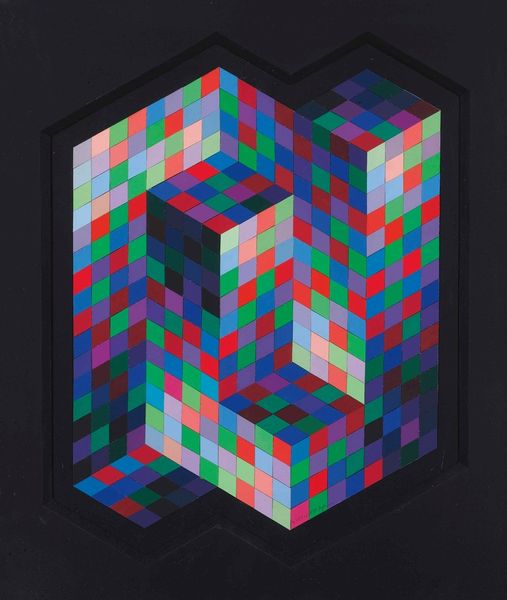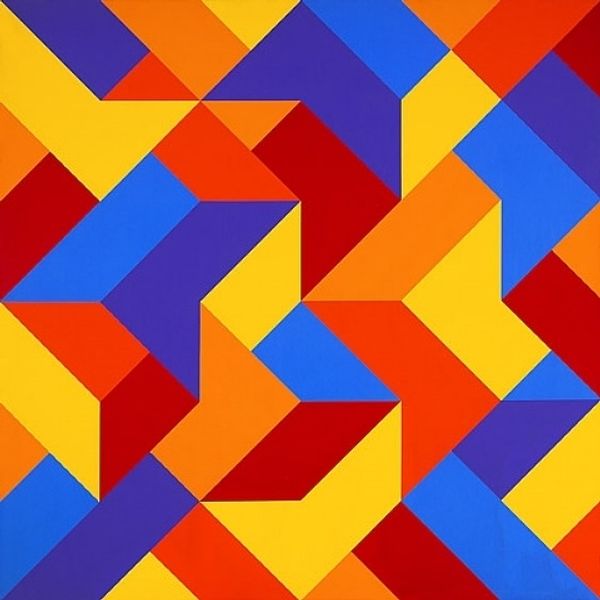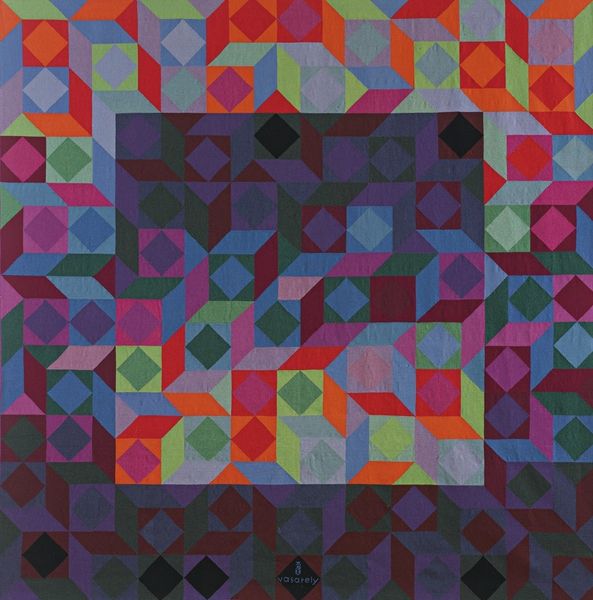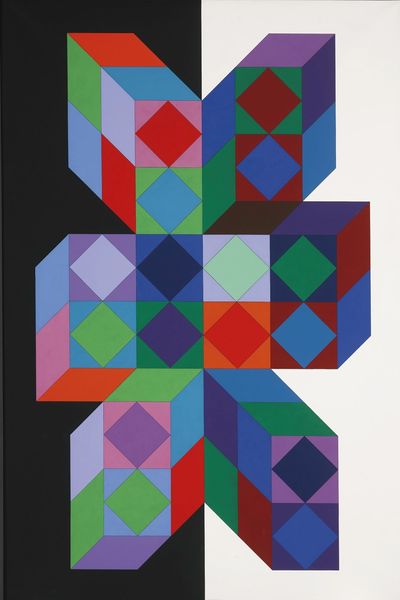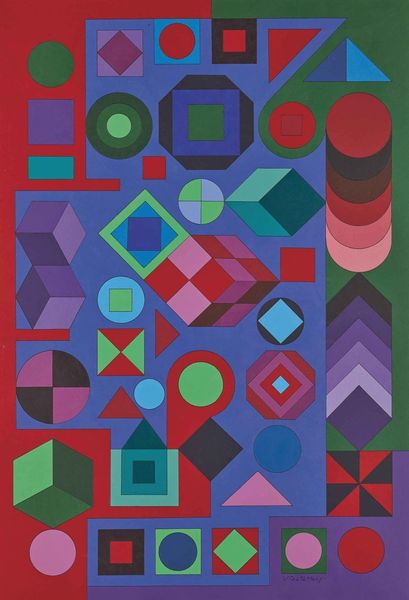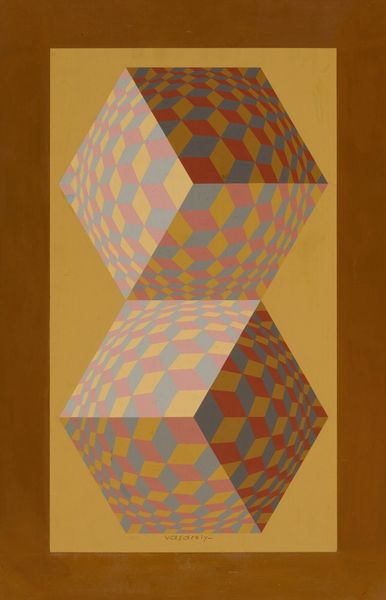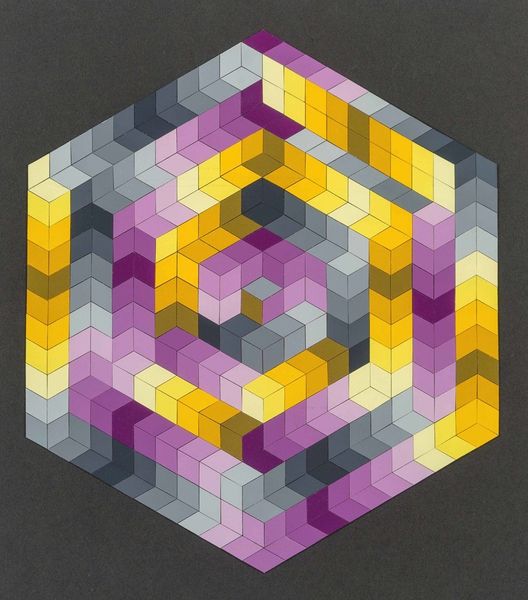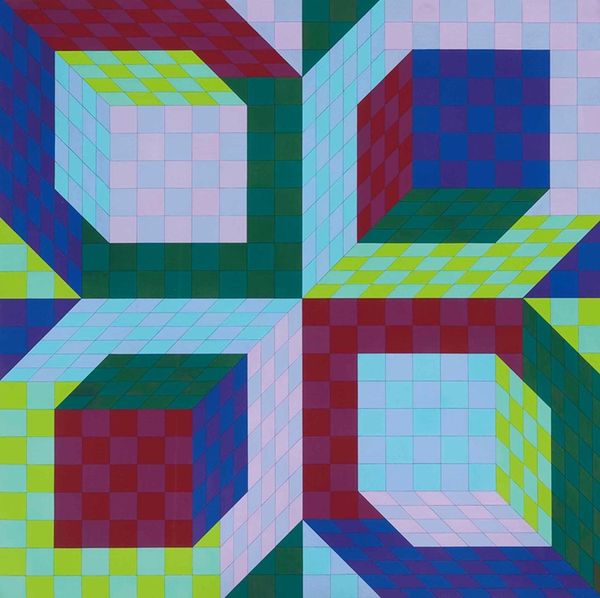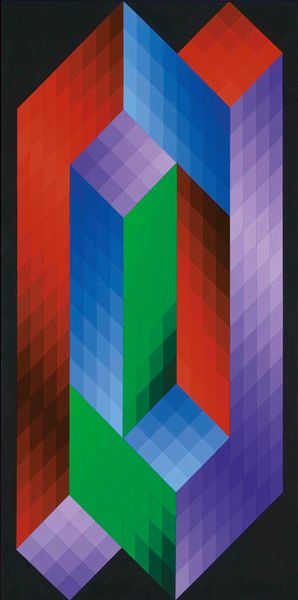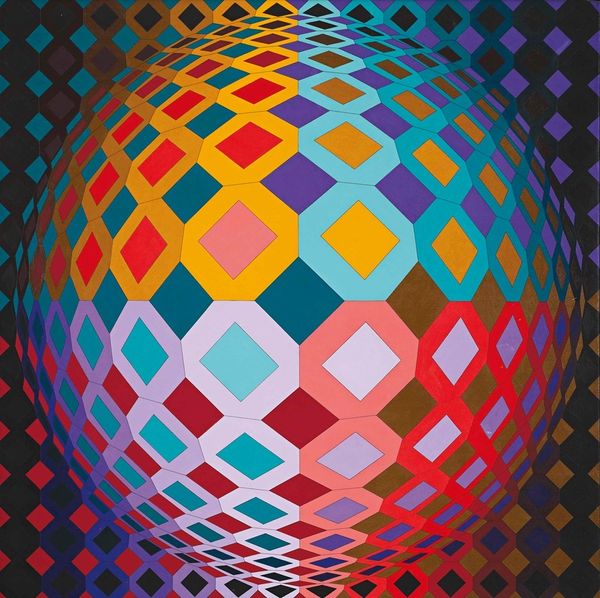
acrylic-paint
#
op-art
#
acrylic-paint
#
geometric
#
abstraction
#
modernism
Copyright: Modern Artists: Artvee
Curator: At first glance, this seems like some child’s fever dream made real, an optical game of colorful blocks against the abyss. Editor: We’re observing Victor Vasarely's "Daymon" from 1982, painted with acrylic. Its defining characteristics involve precise geometric arrangements in eye-catching patterns typical of Op Art. Curator: Exactly, that buzz! My eyes are playing leapfrog with the color combinations and angles! Vasarely throws spatial perception off balance; it’s less about a static composition and more about active viewing. Like trying to find my way through a logic puzzle that constantly shifts its own parameters. Editor: Thinking about its creation in '82, amidst shifting social structures, how much was Vasarely commenting on late capitalism by producing what almost resembles modular building blocks readily deployed as product or décor? Consider how he industrializes artistry—he’s creating accessible, reproducible work for the masses. Curator: Accessible… or escapist? The dizzying design seems less about societal commentary and more an escape. I read these vibrant blocks as building not material wealth but a playground within one’s mind. Color serves emotion before function here, crafting new possibilities in visual reality that soothe while confusing. Editor: However, doesn't it commodify sight, too? Doesn't the industrial mode make aesthetics consumable by presenting standardized units, thereby blurring what constitutes an authentic aesthetic encounter with the object? Also, that the piece is acrylic is telling. How different would our read be had it been tempera or oil, or hell, plaster. Curator: Perhaps it invites us to question those distinctions directly – acrylic removes preciousness. If anything is being packaged and sold, it’s not a unique painting so much as potentiality—the viewer becomes part of some interactive illusion; the possibilities lie inside your perspective more than the painting itself. Editor: True. Viewing requires engaging actively; still, the engagement seems mediated through production processes… I leave considering the tension between perception as labor and color's transformative capability, with Vasarely positioned squarely at the crux of that. Curator: I, on the other hand, keep drifting between dimensions while staring at “Daymon,” appreciating the paradox: controlled composition delivering pure kaleidoscopic liberation.
Comments
No comments
Be the first to comment and join the conversation on the ultimate creative platform.

